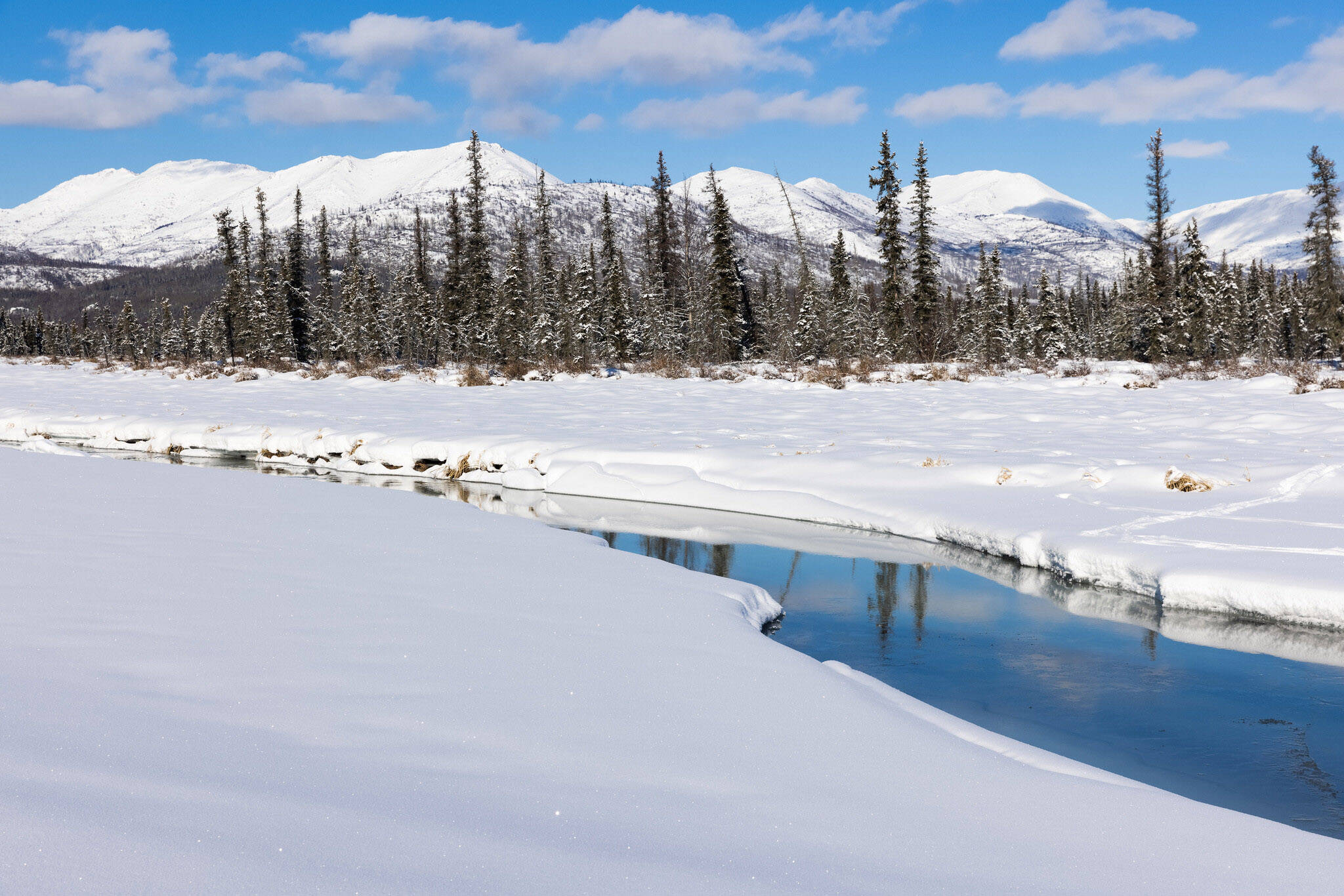Like most everyone here in Southcentral Alaska, much of my leisure time and a good bit of my otherwise normally encumbered time during the last several weeks have been occupied with moving snow, then moving more snow, or even moving the same snow for a second or third time. Driveways, walkways, porches, decks, roofs, boats and chicken coops. Plow, blow, shovel, rake, sweep and repeat.
I last wrote about snow and winter severity for a Refuge Notebook article in January 2015, in an article entitled “Missing the missing snow.” If you were here for that and the previous winter, you’ll recall that it rained at least as often as it snowed, and temperatures remained consistently above normal.
In fact, Anchorage had no days falling below zero during all of 2014. Obviously, a very different scenario than the conditions we’ve experienced so far this winter and those of our last few winters as well.
The variability in our winters during the last decade here has made it difficult to discern trends. Thankfully, scientists Rick Thoman and John Walsh at the University of Alaska Fairbanks’ International Arctic Research Center are crunching the data for us. In 2019 they produced a very informative report, Alaska’s Changing Environment.
They note that fall and winter temperatures were over 3 degrees Fahrenheit warmer in Southcentral from 2014 to 2018 than the period 1981 to 2010, and 4 to 5 degrees warmer in Interior and northern Alaska. Statewide, snowpack now develops about a week later in autumn and melts nearly two weeks earlier in the spring compared to the late 1990s.
In fact, as of 2019, the five earliest snow-off (when statewide snow coverage drops below 50%) dates all occurred from 2014 on. However, Anchorage’s total seasonal snowfall had not shown any significant trend from the early 1940s to 2019, even though snowfall during five of the six winters from 2014 to 2019 was less than the long-term average.
Also statewide, river breakup has trended earlier, especially in recent years. Four of the six years from 2014 to 2019 saw an earlier breakup of the Tanana River at Nenana than all but one year prior to 1990. The earliest breakup in the history of the Nenana Ice Classic, by six days, was in 2019.
What do Alaska’s changing winter conditions mean for its fish and wildlife resources? What we can say for certain is that the natural world is amazingly complex. That these environmental changes are occurring so rapidly is making it more so.
Take, for example, the freshwater portion of the coho salmon life cycle. In the Kenai River, most coho return from an 18-month stay at sea and enter the river from mid-August through September, although a smaller number will continue to arrive well into the winter months.
Eggs are laid in gravel in the main stem and many small tributaries, develop during the winter, and hatch in early spring. Hatched embryos remain in the gravel utilizing their egg yolk until they emerge in May or June, when they occupy shallow areas along stream banks.
During fall, many juvenile coho travel miles from summer rearing areas to habitats off the main river and stream channels or lakes where they pass the winter. Some fish leave fresh water in the spring, rear in brackish estuarine ponds, and then migrate back into fresh water in the fall. They spend one to three winters in streams and may spend up to five winters in lakes before migrating to the sea as smolt.
Only a very small proportion of salmon eggs, including coho, survive over the winter to successfully hatch, and mortality is also high during the fry and smolt phases. Water temperature, dissolved oxygen levels, river discharge rates and availability of suitable rearing habitat are all important to overwinter survival rates of eggs, fry and smolt, and all are influenced by winter conditions.
Salmon productivity also appears affected by how, when and what kind of river ice forms during fall and winter. An interesting study in northern rivers in Canada documented that Atlantic salmon fry to parr mortality was positively related to warmer conditions conducive to frazil and anchor ice formation in early winter. The authors of this study theorized that colder conditions that favored earlier formation of solid ice cover would increase survival.
While I welcome and enjoy most everything about a snowy and cold winter, there’s no denying that some less than positive thoughts about how much more and how much longer we might be dealing with the white stuff have crossed my mind already this year.
Despite that, I know that adapting to whatever weather conditions the next few months may bring will be easy compared to the challenges faced by fish, wildlife and plants needing to adapt to Alaska’s rapidly shifting environmental conditions.
A primary and longtime goal of the Kenai National Wildlife Refuge — maintaining natural processes and its rich diversity of intact and connected habitats — will be critical to supporting the resilience of salmon and other fish and wildlife and their ability to adapt to our changing climate.
For conservation to be successful, however, more is likely needed, given how rapidly our climate system is changing. This reality necessitates the use of science to determine as best as we can how refuge habitats and the processes shaping them are changing and discern how these shifts are impacting biodiversity.
Undoubtedly, important conservation decisions in the face of considerable uncertainty lie ahead, which will require all of us to identify shared values and work toward ensuring they are maintained for future generations. We know how much you value Alaska’s wildness, wild places and wild creatures, and we look forward to working with you to meet this challenge.
From the entire refuge staff, best wishes for a peaceful and joyful holiday season.
Andy Loranger is the Refuge Manager of the Kenai National Wildlife Refuge. Find more Refuge Notebook articles (1999–present) at https://www.fws.gov/kenai-refuge-notebook and follow us on Facebook.

